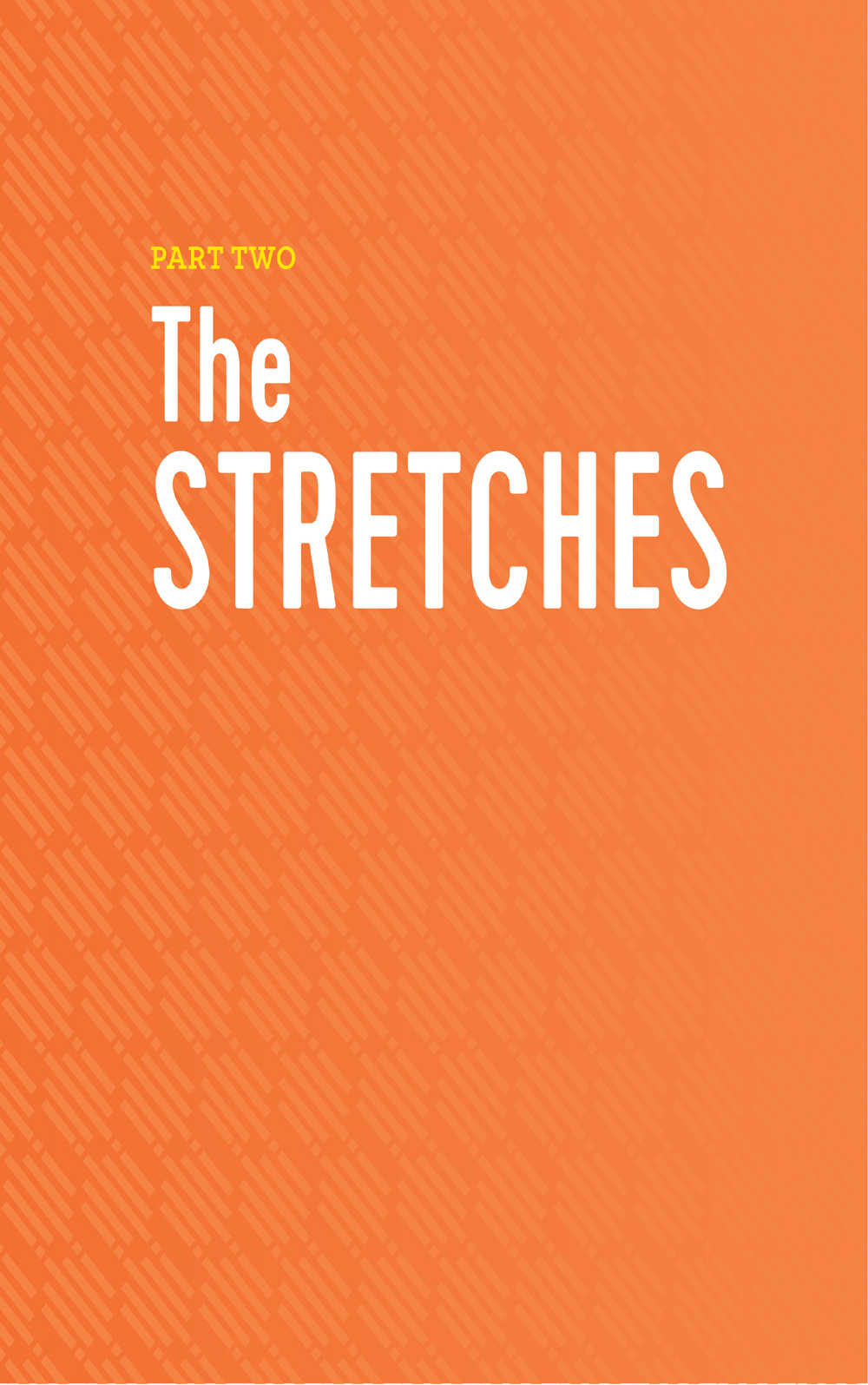
While you have countless options when it comes to stretching, in this book, I wanted to provide you with essential static and dynamic stretches for the entire body as well as self-myofascial release techniques for several key areas to help enhance your flexibility and fitness. In this section, you’ll find a number of safe and effective stretches that are easy to do at home, at the gym, at work, outdoors, or even on the road while traveling, so you can keep flexibility training and its many benefits a priority.
For each stretch included in this book, I’ve included easy-to-follow, numbered steps describing how to properly perform the movement, along with information about the benefits of each stretch and the key areas of the body the stretch targets. Make the most out of your stretching routine by using my tips on how to fine tune your form and recommendations on how to vary the stretches using props or other forms of support (such as a table, wall, or chair) to meet your current fitness level, whether that means you want the stretch to be easier or more challenging.
ZONE 1 Neck
ZONE 2 Upper back (trapezius, rhomboids, thoracic spine, scapula )
ZONE 3 Front of shoulders (anterior and middle deltoid ) and chest (pectorals )
ZONE 4 Back of shoulders (posterior deltoids ) and back (latissimus dorsi )
ZONE 5 Upper arms (biceps brachii and triceps brachii ) and forearms/wrists
ZONE 6 Torso (rectus abdominis, obliques, transverse abdominis, and erector spinae )
ZONE 7 Glutes, outer hips (tensor fascia latae and iliotibial [IT] band ) and inner thighs (hip adductors )
ZONE 8 Hip flexors and thighs (quadriceps and hamstrings )
ZONE 9 Lower legs/ankles (anterior tibialis, gastrocnemius and soleus )